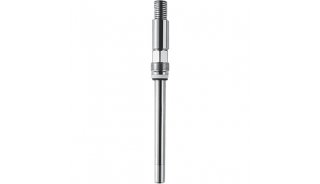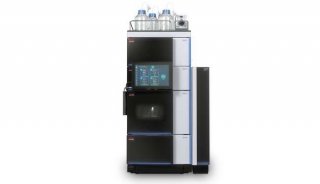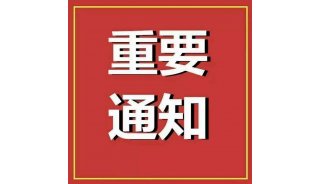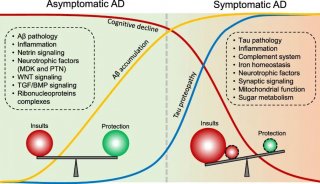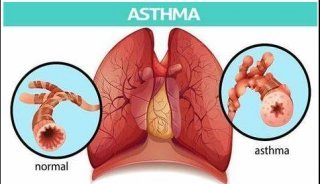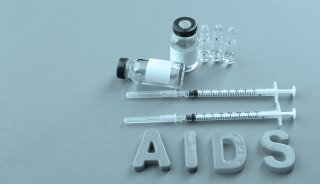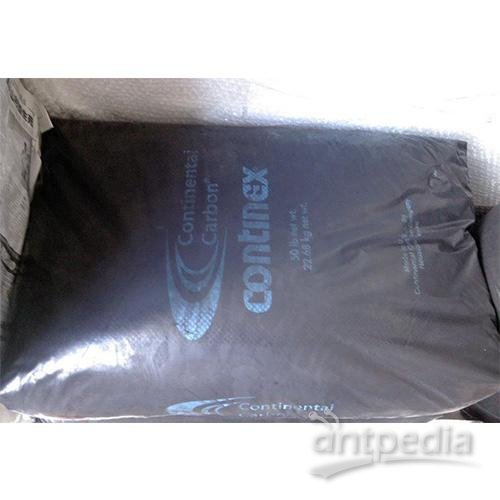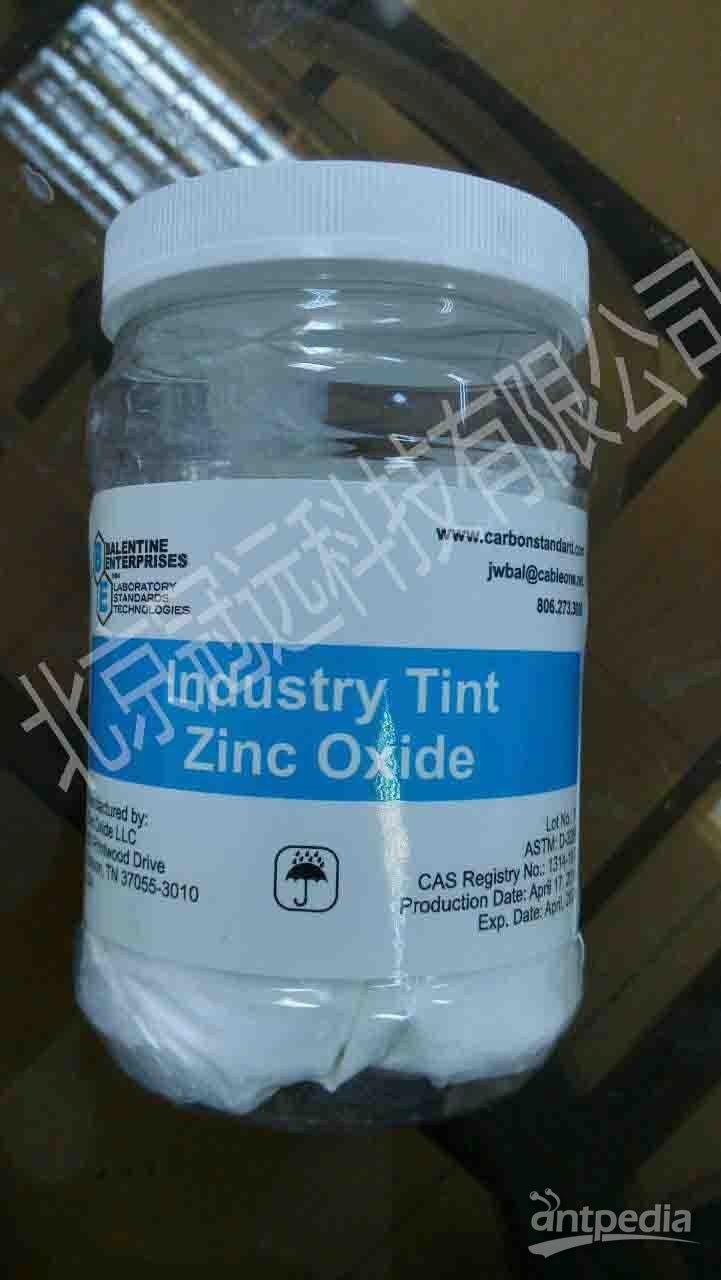FDA刚重磅发布《Bioanalytical Method Validation Guidance for Industry》
I. INTRODUCTION
引言
This guidance helps sponsors of investigational new drug applications (INDs) or applicants of new drug applications (NDAs), abbreviated new drug applications (ANDAs), biologic license applications (BLAs), and supplements validate bioanalytical methods used in human clinical pharmacology, bioavailability (BA), and bioequivalence (BE) studies that require pharmacokinetic, toxicokinetic, or biomarker concentration evaluation.2 This guidance can also inform the development of bioanalytical methods used for nonclinical studies that require toxicokinetic or biomarker concentration data. For studies related to the veterinary drug approval process such as investigational new animal drug applications (INADs), new animal drug applications (NADAs), and abbreviated new animal drug applications (ANADAs), this guidance may apply to blood and urine BA, BE, and pharmacokinetic studies.
该指南有助于研究性新药申请(IND)或新药申请(NDAs)申请人,缩写新药申请(ANDA),生物学许可申请(BLA)和补充剂的申请人验证用于人临床药理学的生物分析方法,生物利用度BA)以及需要进行药代动力学,毒代动力学或生物标志物浓度评估的生物等效性(BE)研究。本指南还可以为需要毒代动力学或生物标志物浓度数据的非临床研究开发生物分析方法。对于有关兽药批准过程的研究,如研究性新动物药物应用(INADs),新动物药物应用(NADAs)和简化新动物药物应用(ANADAs),本指南可能适用于血液和尿液BA,BE,和药代动力学研究。
The information in this guidance applies to bioanalytical procedures such as chromatographic assays (CCs) and ligand binding assays (LBAs) that quantitatively determine the levels of drugs, their metabolites, therapeutic proteins, and biomarkers in biological matrices such as blood, serum, plasma, urine, and tissue such as skin.
本指南中的信息适用于定量确定生物基质(如血液,血清,血浆和血浆)中药物,其代谢物,治疗性蛋白质和生物标志物水平的生物分析程序,如色谱分析(CC)和配体结合分析(LBA)尿液和皮肤等组织。
This final guidance incorporates public comments to the revised draft published in 2013 and provides recommendations for the development, validation, and in-study use of bioanalytical methods. The recommendations can be modified with justification, depending on the specific type of bioanalytical method. This guidance reflects advances in science and technology related to validating bioanalytical methods.
本最终指南将2013年发布的修订草案的公众意见纳入其中,并为生物分析方法的开发,验证和研究中的使用提供建议。根据生物分析方法的具体类型,可以根据理由修改建议。本指南反映了科学技术在验证生物分析方法方面的进展。
In general, FDA’s guidance documents do not establish legally enforceable responsibilities. Instead, guidances describe the Agency’s current thinking on a topic and should be viewed only as recommendations, unless specific regulatory or statutory requirements are cited. The use of the word should in Agency guidances means that something is suggested or recommended, but not required.
一般来说,FDA的指导文件不会建立法律上可执行的责任。相反,指导原则描述了FDA目前关于某一主题的想法,只应将其视为建议,除非引用具体的监管或法定要求。在机构指南中使用这个词意味着建议或推荐某些东西,但不是必需的。
II. BACKGROUND
The 2001 guidance for industry on Bioanalytical Method Validation was originally based on the deliberations of two workshops described in publications entitled:
II。 背景
2001年生物分析方法验证行业指南最初是基于出版物中描述的两个研讨会的讨论,这两个研讨会的题目是:
• Analytical Methods Validation: Bioavailability, Bioequivalence, and Pharmacokinetic Studies
•分析方法验证:生物利用度,生物等效性和药代动力学研究
• Bioanalytical Methods Validation: A Revisit With a Decade of Progress
生物分析方法验证:带有十年进展的重访
Additional workshops, summarized in the following publications, have informed subsequent revisions (e.g., the 2013 draft guidance for industry entitled Bioanalytical Method Validation):
以下出版物中总结的其他研讨会已通知后续修订(例如,2013年生物分析方法验证行业指南草案):
• Quantitative Bioanalytical Methods Validation and Implementation: Best Practices for Chromatographic and Ligand Binding Assays
•定量生物分析方法验证和实施:色谱和配体结合分析的最佳实践
• The AAPS/FDA Workshop on Incurred Sample Reanalysis
•AAPS / FDA关于发生样品再分析的研讨会
• The AAPS Workshop on Crystal City V — Quantitative Bioanalytical Method Validation and Implementation: 2013 Revised FDA Guidance
•AAPS水晶城V研讨会 -定量生物分析方法验证和实施:2013年修订的FDA指南
Validated analytical methods for the quantitative evaluation of analytes (i.e., drugs, including biologic products, and their metabolites) and biomarkers in a given biological matrix (e.g. blood, plasma, serum, or urine) are critical for the successful conduct of nonclinical, biopharmaceutics, and clinical pharmacology studies. These validated methods provide critical data to support the safety and effectiveness of drugs and biologic products. Validating the analytical method ensures that the data are reliable by addressing certain key questions, including:
用于对特定生物基质(如血液,血浆,血清或尿液)中的分析物(即药物,包括生物产品及其代谢物)和生物标志物进行定量评估的有效分析方法对于非临床生物制药的成功实施至关重要,和临床药理学研究。这些经过验证的方法提供了关键数据来支持药物和生物制品的安全性和有效性。通过解决某些关键问题,验证分析方法可确保数据的可靠性,其中包括:
• Does the method measure the intended analyte? For example, does anything interfere with the measurement, and is the method specific or selective for the analyte?
• What is the variability associated with these measurements? For example, what are the accuracy and precision of the method?
• What is the range in measurements that provide reliable data? For example, what is the sensitivity of the method (e.g., what is the lower limit of quantitation (LLOQ) of the method, and what is the upper limit of quantitation the method (ULOQ)?)
• How do sample collection, handling, and storage affect the reliability of the data from the bioanalytical method? For example, what steps need to be followed while collecting samples? Do the samples need to be frozen during shipping? What temperatures are required to store the samples, and how long can the samples be stored?
•该方法是否测量预期的分析物?例如,是否有什么干扰测量,并且是分析物特有的还是选择性的方法?
•这些测量有何变化?例如,该方法的准确性和精确度是什么?
•提供可靠数据的测量范围是多少?例如,该方法的灵敏度是多少(例如,该方法的定量下限(LLOQ)是多少,该方法的定量上限是多(ULOQ)?)
•样本采集,处理和存储如何影响生物分析方法数据的可靠性?例如,收集样本时需要遵循哪些步骤?运输过程中是否需要冻结样品?需要什么样的温度来存储样品,样品可以存储多长时间?
When changes are made to a validated method, the sponsor should conduct additional validation (i.e., partial or cross validation).
The fit-for-purpose (FFP) concept states that the level of validation should be appropriate for the intended purpose of the study. The key questions listed above should be evaluated relative to the stage of drug development. Pivotal studies submitted in an NDA, BLA, or ANDA that require regulatory decision making for approval, safety or labeling, such as BE or pharmacokinetic studies, should include bioanalytical methods that are fully validated. Exploratory methods that would not be used to support regulatory decision making (e.g., candidate selection) may not require such stringent validation. This FFP concept applies to drugs, their metabolites, and biomarkers.
The analytical laboratory conducting toxicology studies for regulatory submissions should adhere to 21 CFR 58, Good Laboratory Practices (GLPs).9 The bioanalytical method for human BA, BE, and pharmacokinetic studies must meet the criteria specified in 21 CFR 320 Bioequivalence and Bioavailability Requirements (i.e., 21 CFR 320.29).
The following sections discuss the development, validation, and in-study use of bioanalytical methods and how best to document validation methods and results. Refer to the Glossary for the definitions of assay parameters and analytical terms used in this guidance.
当对经过验证的方法进行更改时,申办者应进行额外的验证(即部分验证或交叉验证)。
符合目的(FFP)的概念指出,验证的水平应适合研究的预期目的。上面列出的关键问题应该相对于药物开发阶段进行评估。在NDA,BLA或ANDA中提交的需要作出批准,安全或标签(如BE或药代动力学研究)的监管决策的关键研究应包括经过充分验证的生物分析方法。不用于支持监管决策(例如,候选人选择)的探索性方法可能不需要这样严格的验证。该FFP概念适用于药物,其代谢物和生物标志物。
进行毒理学研究的分析实验室应遵守21 CFR 58,良好实验室规范(GLP).9人体BA,BE和药代动力学研究的生物分析方法必须符合21 CFR 320生物等效性和生物可用性要求(即21 CFR 320.29)。
以下部分将讨论生物分析方法的开发,验证和研究中的使用以及如何最好地记录验证方法和结果。请参阅术语表以获取本指南中使用的测定参数和分析术语的定义。
III. BIOANALYTICAL METHOD DEVELOPMENT AND VALIDATION
A. Guiding Principles
The purpose of bioanalytical method development is to define the design, operating conditions, limitations, and suitability of the method for its intended purpose and to ensure that the method is optimized for validation.
Before the development of a bioanalytical method, the sponsor should understand the analyte of interest (e.g., determine the physicochemical properties of the drug, in vitro and in vivo metabolism, and protein binding) and consider aspects of any prior analytical methods that may be applicable.
The elements and acceptance criteria of method development and validation are summarized in Table 1. Table 2 describes how the sponsor should document the development and validation of the bioanalytical assay and where it should be stored or submitted.
Method development involves optimizing the procedures and conditions involved with extracting and detecting the analyte. Method development includes the optimization of the following bioanalytical parameters (which are discussed in greater detail in section III.B) to ensure that the method is suitable for validation:
• Reference standards • Critical reagents • Calibration curve • Quality control samples (QCs) • Selectivity and specificity • Sensitivity • Accuracy • Precision • Recovery • Stability of the analyte in the matrix
Bioanalytical method development does not require extensive record keeping or notation. However, the sponsor should record the changes to procedures as well as any issues and their resolutions during development of the bioanalytical method to provide a rationale for any changes during the development of the method.
Bioanalytical method validation proves that the optimized method is suited to the analysis of the study samples. The sponsor should:
III。生物分析方法的开发和验证
A.指导原则
生物分析方法开发的目的是确定方法的设计,操作条件,限制和适用性,以确保其方法达到最佳效果。
在开发生物分析方法之前,申办者应该了解感兴趣的分析物(例如确定药物的物理化学性质,体外和体内代谢以及蛋白质结合)并考虑可能适用的任何现有分析方法的方面。
方法开发和验证的要素和验收标准总结在表1中。表2描述了申办者如何记录生物分析测定的开发和验证以及应该如何存储或提交。
方法开发涉及优化与提取和检测分析物有关的程序和条件。方法开发包括优化以下生物分析参数(将在第III.B节中详细讨论),以确保该方法适用于验证:
•参比标样•关键试剂•校准曲线•质控样品(QC)•选择性和特异性•灵敏度•准确度•精密度•回收率•基质中分析物的稳定性
生物分析方法开发不需要大量的记录保存或符号。但是,申办者应该在开发生物分析方法的过程中记录程序的变化以及任何问题和解决方案,以便为方法开发过程中的任何变化提供基本原理。
生物分析方法验证证明,优化的方法适合分析研究样品。申办者应该:
• Conduct a full validation of any new bioanalytical method for the analysis of a new drug entity, its metabolite(s), or biomarkers.
• Conduct a full validation for any revisions to an existing validated method that adds a metabolite or an additional analyte.
• Establish a detailed, written description (e.g., protocol, study plan, and/or standard operating procedure (SOP)) for the bioanalytical method before initiating validation. The description should identify procedures that control critical parameters in the method (e.g., environmental, matrix, procedural variables) from the time of collection of the samples to the time of analysis to minimize their effects on the measurement of the analyte in the matrix.
• Document and report (in the method validation report) all experiments used to make claims or draw conclusions about the validity of the method.
• Validate the measurement of each analyte in the biological matrix. The specific requirements and acceptance criteria for each bioanalytical parameter are listed in Table 1.
B. Bioanalytical Parameters of CCs and LBAs
The bioanalytical parameters applicable to CCs and LBAs are discussed below. Issues unique to either CCs or LBAs are specifically identified.
1. Reference Standards and Critical Reagents
The sponsor should appropriately characterize and document (e.g. determine the identity, purity, and stability) all reference standards and critical reagents, such as antibodies, labeled analytes, and matrices and store them under defined conditions.
a. Reference standards
The purity of reference standards used to prepare calibrators and QCs can affect the study data. Therefore, the sponsor should use authenticated analytical reference standards with known identities and purities to prepare solutions of known concentrations. The reference standard should be identical to the analyte; however, when this scenario is not possible, the sponsor can use an established chemical form (e.g., free base, free acid, or salt) of known purity.
The sponsor should provide the certificates of analyses (CoA), including the source, lot number, and expiration date (with the exception of United States Pharmacopeia (USP) standards) for commercially available reference standards. For internally or externally generated reference standards that do not have a CoA, the sponsor should provide evidence of the standard’s identity and purity in addition to the source and the lot number. When using expired reference standards, the sponsor should provide an updated CoA or re-establish the identity and purity of the standard. If the reference standard expires, the sponsor should not make stock solutions with this lot of standard unless the standard’s purity is re-established. For internal standards (ISs), the sponsor does not have to provide a CoA or evidence of purity if it demonstrates that the IS is suitable for the specific use (e.g., lack of interference with an analyte).
•对任何新的生物分析方法进行全面验证,以分析新药物实体,其代谢物或生物标记物。
•对添加代谢物或额外分析物的现有验证方法的任何修订进行全面验证。
•在开始验证之前,为生物分析方法建立详细的书面描述(例如,方案,研究计划和/或标准操作程序(SOP))。描述应该确定控制方法中的关键参数(例如,环境,基体,程序变量)从采样到分析时间的程序,以使其对矩阵中分析物测量的影响最小化。
•记录和报告(在方法验证报告中)用于提出索赔的所有实验,或者得出关于该方法有效性的结论。
•验证生物基质中每种分析物的测量结果。表1列出了每个生物分析参数的具体要求和验收标准。
B. CC和LBA的生物分析参数
下面讨论适用于CC和LBA的生物分析参数。具体确定CC或LBA独有的问题。
1.参考标准和关键试剂
申办者应对所有参考标准品和关键试剂(如抗体,标记分析物和基质)进行适当表征和记录(如确定其身份,纯度和稳定性),并将其存储在特定条件下。
一个。参考标准
用于制备校准品和QC的参考标准的纯度会影响研究数据。因此,申办者应使用具有已知身份和纯度的认证分析参考标准来制备已知浓度的溶液。参考标准应与分析物相同;然而,当这种情况不可能时,申办者可以使用已知纯度的确定的化学形式(例如游离碱,游离酸或盐)。
申办者应提供分析证明(CoA),包括来源,批号和截止日期(美国药典(USP)标准除外)。对于没有CoA的内部或外部生成的参考标准,除了来源和批号外,申办者还应提供标准身份和纯度的证据。使用过期参考标准时,申办者应提供最新的CoA或重新确定标准的身份和纯度。如果参考标准到期,除非标准的纯度重新建立,否则发起人不应该使用这个标准的库存解决方案。对于内部标准(ISs),如果申办者证明信息系统适合于特定用途(例如缺乏干扰w),则申办者不必提供CoA或纯度证据。
b. Critical reagents
The sponsor should appropriately characterize and document (i.e., determine the identity, purity and stability) the critical reagents, including – but not limited to – any reference standards, antibodies, labeled analytes, and matrices.
Assay validation is important when there are changes to the critical reagents, such as lot-to-lot changes or switches to another reagent. For example, if there are changes to the labeled analytes, detector reagents, or antibodies, the sponsor should:
• Evaluate binding and re-optimize assays
• Verify performance with a standard curve and QCs
• Evaluate cross-reactivities
2. Calibration Curve
During method development, the sponsor should choose the quantitation range of the assay and the concentrations of the calibration standards on the basis of the concentration range expected in a particular study. For LBAs, in addition to the calibration standards, anchor points outside the range of quantification can facilitate the fitting of the curve. Anchor points should not be used as part of the acceptance criteria for the run. For most LBAs, calibration (standard) curves are inherently nonlinear, and in general, more calibration standards are needed to define the fit over the calibration curve range for LBAs than for CCs. In addition, the response-error relationship for LBA standard curves is a variable function of the mean response (i.e., heteroscadisticity).
The sponsor should use the simplest model that adequately describes the concentration-response relationship, as well as an appropriate weighting scheme and regression equation. For LBAs, the concentration-response relationship is most often fitted to a four -or five-parameter logistic model, although other models can be assessed.
When the method is validated, the calibration curve should be continuous and reproducible. The sponsor should prepare the calibration standards in the same biological matrix as the samples in the intended study. Study samples may contain more than one analyte. The sponsor should generate a calibration curve for each analyte in the sample. When surrogate matrices are necessary, the sponsor should justify and validate the calibration curves.
The requirements for the calibration curve, including the LLOQ, ULOQ, as well as the acceptance criteria are listed in Table 1.
关键试剂
申办者应适当表征和记录关键试剂(包括但不限于)任何参考标准品,抗体,标记分析物和基质,并记录(即确定其身份,纯度和稳定性)。
当关键试剂发生变化时,分析验证非常重要,如批次间变化或切换到其他试剂。例如,如果标记的分析物,检测试剂或抗体发生变化,申办者应该:
•评估结合并重新优化检测
•使用标准曲线和QC验证性能
•评估交叉反应性
2.校准曲线
在方法开发过程中,申办者应根据特定研究中预期的浓度范围选择测定的定量范围和校准标准品的浓度。对于LBA,除了校准标准外,量化范围之外的锚点可以帮助拟合曲线。不应将锚点用作运行验收标准的一部分。对于大多数LBA,校准(标准)曲线本质上是非线性的,并且通常需要更多的校准标准来定义LBA的校准曲线范围与CC的拟合。另外,LBA标准曲线的响应 -误差关系是平均响应的可变函数(即异质性)。
申办者应使用充分描述浓度 -反应关系的最简单模型,以及适当的加权方案和回归方程。对于LBA,浓度 -反应关系通常适用于四参数或五参数逻辑模型,但也可以评估其他模型。
当该方法被验证时,校准曲线应该是连续的和可重现的。申办者应该在预期研究中的样品制备相同的生物基质中的校准标准。研究样品可能含有多种分析物。申办者应该为样品中的每种分析物产生校准曲线。当需要替代矩阵时,申办者应该证明和验证校准曲线。
表1列出了校准曲线的要求,包括LLOQ,ULOQ和验收标准。
3. Quality Control Samples
Quality controls are used to assess the precision and accuracy of an assay and the stability of the samples. Sponsors should prepare QCs in the same matrix as the study samples to be assayed with the validated method. Freshly prepared QCs are recommended for precision and accuracy analyses during method development, as stability data are generally not available at this time.
During method validation, QCs evaluate the performance of a method and the stability of an analyte. Performance QCs are included in validation runs to determine the precision and accuracy of the method (see section III.B). Stability QCs evaluate the stability of an analyte under various stress conditions (Refer to section III.B for the selection of QC concentrations).
The sponsor should prepare any calibration standards and QCs from separate stock solutions. However, if the sponsor can demonstrate the precision and accuracy in one validation run using calibrators and QCs prepared from separate stock solutions, then the sponsor can use calibrators and QCs prepared from the same stock solution in subsequent runs. The sponsor should make up calibrators and QCs in lots of blank matrix that is free of interference or matrix effects.
4. Selectivity and Specificity
During method development, the sponsor should verify that the substance being measured is the intended analyte to minimize or avoid interference. Selectivity of the method is routinely demonstrated by analyzing blank samples of the appropriate biological matrix (e.g., plasma) from multiple sources. Depending on the intended use of the assay, the impact of hemolyzed samples, lipemic samples, or samples from special populations can be included in the selectivity assessment. When using liquid chromatography/mass spectrometry (LC/MS) methods, the sponsor or applicant should determine the effects of the matrix on ion suppression, ion enhancement, or extraction efficiency. Internal standards should be assessed to avoid interference with the analyte. Potential interfering substances in a biological matrix include endogenous matrix components such as metabolites, decomposition products – and from the actual study – concomitant medications and other xenobiotics. If a stabilizer or enzyme inhibitor is used during sample collection, the sponsor should evaluate the potential for interference on the quantitation of the analyte. Sponsors should make a scientific judgment about the need to assess these (and any other) potential interferences during method development.
During validation, the sponsor should confirm that the assay is free of potential interfering substances including endogenous matrix components, metabolites, anticipated concomitant medications, etc. If the study sample contains more than one analyte and the analytes are intended to be quantified by different methods, the sponsor should test each method for interference from the other analyte.
The sponsor should analyze blank samples of the appropriate biological matrix (e.g. plasma) from at least six (for CCs) or ten (for LBAs) individual sources. The sponsor should ensure that there are no matrix effects throughout the application of the method. Refer to Table 1 for details of selectivity and specificity requirements and acceptance criteria.
3.质量控制样品
质量控制用于评估测定的精确度和准确度以及样品的稳定性。申办者应该使用经过验证的方法与待分析的研究样品在相同的基质中制备QC。在方法开发过程中,建议使用新制备的QC进行精密度和准确度分析,因为此时通常不提供稳定性数据。
在方法验证期间,QC评估方法的性能和分析物的稳定性。性能QCs包含在验证运行中以确定方法的精确度和准确性(请参阅第III.B节)。稳定性QC评估各种应力条件下分析物的稳定性(关于选择QC浓度,请参阅第III.B部分)。
申办者应该从不同的库存解决方案中准备任何校准标准和QC。但是,如果赞助商可以证明使用由不同储备溶液制备的校准品和QC进行的一次验证运行中的精确度和准确性,那么赞助商可以在随后的运行中使用由相同储备液制备的校准品和QC。赞助商应该在没有干扰或基质影响的大量空白基质中制作校准品和QC。
4.选择性和特异性
在方法开发过程中,申办者应确认被测物质是预期分析物,以尽量减少或避免干扰。该方法的选择性通过分析来自多个来源的合适生物基质(例如血浆)的空白样品而被常规证明。根据测定的预期用途,溶血样品,脂血样品或来自特定人群的样品的影响可以包括在选择性评估中。当使用液相色谱/质谱(LC / MS)方法时,申办者或申请人应确定基质对离子抑制,离子增强或提取效率的影响。应对内部标准进行评估以避免干扰分析物。生物基质中潜在的干扰物质包括内源性基质成分,如代谢物,分解产物 -以及实际研究 -伴随药物和其他异生素。如果在样品采集期间使用稳定剂或酶抑制剂,申办者应评估对定量分析物产生干扰的可能性。申办者应该对方法开发过程中评估这些(以及其他任何潜在干扰)的需求做出科学判断。
在验证过程中,申办者应确认测定不含潜在的干扰物质,包括内源性基质成分,代谢物,预期的伴随药物等。如果研究样品含有多种分析物,并且分析物旨在通过不同的方法进行定量,申办者应该测试每种方法是否受到来自其他分析物的干扰。
申办者应该分析appr的空白样本
For LBAs, it is important to investigate any interference originating from structurally or physiologically similar analytes (i.e., exogenous interference) or matrix effects (i.e., endogenous interference). Investigating exogenous interference involves determining the cross-reactivity of molecules that could potentially interfere with the binding interaction, including molecules structurally related to the drug, any metabolites, concomitant medications (and their significant metabolites), or endogenous matrix components. The sponsor should evaluate each factor individually and in combination with the analyte of interest to determine its ability to cause interference. Matrix effects evaluation involves comparing calibration curves in multiple sources of the biological matrix against a calibration curve in the matrix for parallelism (serial dilution of incurred samples) and nonspecific binding. The sponsor should eliminate or minimize any significant interference. If such attempts are unsuccessful, the sponsor could consider the development of an orthogonal method to eliminate or minimize the interference.
Carryover between samples can occur in analytical methods. The sponsor should eliminate any carryover during method development. If carryover cannot be eliminated, the sponsor should assess the impact of any carryover during method validation on the accuracy of the study sample concentrations.
5. Sensitivity
The LLOQ defines the method sensitivity and should be determined during method development. The method should be developed and validated such that it will be able to meet the requirements necessary for the intended study samples. The LLOQ evaluation can be done separately or as part of the precision and accuracy assessment for the calibration range. The specific requirements to validate sensitivity are listed in Table 1.
6. Accuracy, Precision, and Recovery
Evaluating the accuracy and precision across the quantitation range during method development is essential to determine whether the method is ready for validation and involves analyzing replicate QCs at multiple concentrations across the assay range. Specifically, the sponsor should evaluate the performance at the LLOQ, low, mid and high QCs (and the ULOQ for LBAs) to determine if the method is suitable to analyze study samples.
Method validation experiments for estimating accuracy and precision should include a minimum of three (for CCs) and six (for LBAs) independent runs (i.e., accuracy and precision (A & P) runs; see Table 1) conducted over several days. Each A & P run should include a calibration curve and multiple QC concentrations that are analyzed in replicates. The sponsor should determine the accuracy and precision of the method based on the performance of the QC in the A & P runs. The specific validation requirements for accuracy and precision and A & P runs are listed in Table 1. The sponsor should use freshly prepared calibrators and QCs in all A & P runs. Use of freshly prepared QCs in all A & P runs is preferred; however, if this is not possible, the sponsor should use freshly prepared QCs in one or more A & P runs.
The sponsor should optimize the recovery of the analyte to ensure that the extraction is efficient and reproducible. Recovery need not be 100 percent, but the extent of the recovery of an analyte and of the ISs should be consistent and reproducible. The sponsor should perform recovery experiments by comparing the analytical results of extracted samples with corresponding extracts of blanks spiked with the analyte post-extraction (i.e., to represent 100 percent recovery). Recovery evaluation is not necessary for LBAs unless sample extraction is involved. Recovery experiments should be performed as described in Table 1.
对于LBA,研究来源于结构或生理学相似分析物(即外源干扰)或基质效应(即内源性干扰)的干扰很重要。研究外源性干扰涉及确定可能干扰结合相互作用的分子的交叉反应性,包括与药物结构相关的分子,任何代谢物,伴随药物(及其重要代谢物)或内源性基质组分。申办者应分别评估每个因素,并与感兴趣的分析物结合,以确定其造成干扰的能力。基质效应评估涉及将生物基质的多个来源中的校准曲线与基质中的校准曲线进行比较(并行度(发生样品的连续稀释))和非特异性结合。申办者应该消除或减少任何重大干扰。如果这种尝试不成功,发起人可以考虑开发正交方法以消除或最小化干扰。
样品之间的结转可能发生在分析方法中。发起人应该在方法开发过程中消除任何遗留物。如果无法消除遗留物,申办者应评估方法验证期间任何遗留物对研究样本浓度准确性的影响。
5.灵敏度
LLOQ定义了方法灵敏度,应在方法开发过程中确定。应开发和验证该方法,使其能够满足预期研究样本所需的要求。 LLOQ评估可以单独完成,也可以作为校准范围精度和准确度评估的一部分。表1列出了验证灵敏度的具体要求。
6.准确性,精确度和恢复
在方法开发过程中评估整个定量范围内的准确度和精密度对于确定该方法是否可以进行验证并涉及分析整个测定范围内多个浓度的重复QC是至关重要的。具体而言,申办者应评估LLOQ,低,中,高QC(以及LBA的ULOQ)的表现,以确定该方法是否适合分析研究样本。
用于估计准确性和精密度的方法验证实验应包括在数天内进行的最少三次(对于CC)和六次(对于LBA)独立运行(即,精度和精度(A&P)运行;参见表1)。每次A&P运行应包括校准曲线和重复分析的多个QC浓度。申办者应根据A&P运行中QC的性能来确定方法的准确性和精确度。表1列出了准确度和精密度以及A&P运行的具体验证要求。赞助商应在所有A&P运行中使用新制备的校准品和QC。在所有A&P运行中使用新鲜制备的QCs是首选;然而,如果这不可能,赞助商应该在一次或多次A&P运行中使用新配备的QC。
申办者应优化分析物的回收率以确保萃取效率和可重复性。回收率不必为100%,但分析物和IS的回收率应该一致且可重现。申办者应通过将提取样品的分析结果与萃取后萃取分析物的相应提取物(即代表100%回收)进行比较来进行回收实验。除非涉及样本提取,否则恢复评估对于LBA不是必需的。恢复实验应按照表1中的描述进行。
7. Stability
During method development, the sponsor should determine the chemical stability of the analyte in a given matrix, including the effects of sample collection, handling, and storage of the analyte. The sponsor should assess autosampler, benchtop, processed or extracted samples, freeze-thaw, stock solution, and long-term stability of the analyte. The sponsor should assess the stability in the same matrix as that intended for in-study samples; however, when the matrix is rare, the sponsor can explore the use of suitable surrogate matrices.
For drugs administered as fixed combinations, or part of a specific drug regimen, the stability of the analyte should be assessed in the presence of the other drug. The sponsor should also consider the stability of the analyte in the presence of other co-medications that are known to be regularly administered to patients for the indication of the drug under development.
Depending on the analyte as well as the sample collection and assay conditions, evaluating the stability of the analyte in whole blood during method development can be useful. For example, a drug can be unstable in whole blood or adsorb to cellular components during collection.
During validation, stability evaluations should cover the expected sample conditions before receipt at the analytical site (e.g., at the clinical site, during shipment, and at all other secondary sites) as well as during receipt and analysis at the analytical site. Validation of drug stability in a biological fluid is a function of the storage conditions, the physicochemical properties of the drug, the matrix, and the container system. The stability of an analyte in a particular matrix and container system is relevant only to that matrix and container system and should not be extrapolated to other matrices and container systems.
If the storage conditions changed or the sample analysis occurred outside of the validated storage condition , the stability should be re-established under these new conditions. Stability testing of the analyte in whole blood should be revalidated if necessary (e.g., if the analytes are unstable during blood collection). The specific requirements and acceptance criteria for stability are listed in Table 1.
Matrix-related stability experiments should compare stability QCs against freshly prepared calibration curves and freshly prepared QCs. Although the use of freshly prepared calibrators and QCs is the preferred approach, in some cases, (e.g., for macromolecules), it may be necessary to freeze them overnight. In such cases, the sponsor should provide valid justification and demonstrate the freeze-thaw stability.
7.稳定性
在方法开发过程中,申办者应确定给定基质中分析物的化学稳定性,包括样品收集,处理和分析物储存的影响。赞助商应评估自动进样器,台式,加工或提取的样品,冻融,储备液和分析物的长期稳定性。申办者应评估与研究样本相同基质的稳定性;然而,当矩阵很少时,申办者可以探索使用合适的替代矩阵。
对于以固定组合或部分特定药物方案给药的药物,应在其他药物存在下评估分析物的稳定性。申办者还应该考虑在已知定期向患者指示正在开发的药物的其他联合药物的情况下分析物的稳定性。
根据分析物以及样品采集和分析条件,在方法开发过程中评估分析物在全血中的稳定性可能是有用的。例如,药物可能在全血中不稳定或在收集期间吸附到细胞组分。
在验证过程中,稳定性评估应该在分析地点(例如临床地点,运输过程中和所有其他二级地点)以及分析地点接收和分析期间覆盖预期样品条件。生物液体中药物稳定性的验证是储存条件,药物的物理化学性质,基质和容器系统的函数。分析物在特定基质和容器系统中的稳定性仅与该基质和容器系统有关,不应外推至其他基质和容器系统。
如果储存条件改变或样品分析发生在经验证的储存条件之外,则应在这些新条件下重新建立稳定性。如有必要,应对全血中分析物的稳定性测试进行重新验证(例如,如果分析物在采血过程中不稳定)。表1列出了稳定性的具体要求和验收标准。
与基质相关的稳定性实验应比较稳定性QCs与新制备的校准曲线和新制备的QCs。尽管使用新制备的校准品和QCs是优选的方法,但在某些情况下(例如,对于大分子),可能需要将它们冻结过夜。在这种情况下,申办者应提供有效的理由并证明冻融稳定性。
All stability determinations (see list below) should use a set of samples prepared from a freshly made stock solution of the analyte in the appropriate analyte-free, interference-free biological matrix.
• Autosampler stability: The sponsor should demonstrate the stability of extracts in the autosampler only if the autosampler storage conditions are different or not covered by extract (processed sample) stability.
• Bench-top stability: The sponsor should determine the stability of samples under the laboratory handling conditions that are expected for the study samples (e.g., the stability of samples maintained at room temperature or stored in an ice bucket).
• Extract (or processed sample) stability: The sponsor should assess the stability of processed samples, including the residence time in the autosampler against freshly prepared calibrators.
• Freeze-thaw stability: The sponsor should assess the stability of the sample after a minimum of three freeze-thaw cycles. QC samples should be thawed and analyzed according to the same procedures as the study samples. QC samples should be frozen for at least 12 hours between cycles. Freeze-thaw stability QCs should be compared to freshly prepared calibration curves and QCs.
• Long-term stability: The sponsor should determine the long-term stability of the sample over a period of time equal to or exceeding the time between the date of first sample collection and the date of last sample analysis. The storage temperatures studied should be the same as those used to store study samples. Long-term stability QCs should be compared to freshly prepared calibration curves and QCs. Determination of stability at minus 20ºC would cover stability at colder temperatures.
• Stock solution stability: Stock solutions should not be made from reference materials that are about to expire unless the purity of the analyte in the stock solutions is reestablished. When the stock solution exists in a different state (e.g., solution versus solid) or in a different buffer composition (which is generally the case for macromolecules) from the certified reference standard, the sponsor should generate stability data on stock solutions to justify the duration of stock solution storage stability.
8. Dilution Effects
If the method measures diluted samples, the integrity of the dilution should be monitored during validation by diluting QC samples above the ULOQ with like matrix to bring to within quantitation range, and the accuracy and precision of these diluted QCs should be demonstrated. Dilutions used during the validation should mimic the expected dilutions in the study. The prozone effect should be demonstrated in LBAs. Refer to the specific requirements and acceptance criteria in Table 1.
所有稳定性测定(参见下面的列表)应该使用由新鲜制备的分析物储备溶液制备的一组样品,该分析物储存在适当的无分析物,无干扰的生物基质中。
•自动进样器稳定性:只有在自动进样器储存条件不同或未被提取物(加工样品)稳定性覆盖时,申办者才应该证明提取物在自动进样器中的稳定性。
•台式稳定性:申办者应确定研究样品预期的实验室处理条件下样品的稳定性(例如样品的稳定性保持在室温下或储存在冰桶中)。
•提取物(或加工样品)的稳定性:申办者应评估加工样品的稳定性,包括自动进样器在新制备的校准品中的停留时间。
•冻融稳定性:申办者应在至少三次冻融循环后评估样品的稳定性。 QC样品应根据与研究样品相同的程序解冻和分析。 QC样品应在两个循环之间冷冻至少12小时。应将冻融稳定性QC与新鲜制备的校准曲线和QC进行比较。
•长期稳定性:申办者应确定样本在一段时间内的长期稳定性,该时间段等于或超过从首次采样日期到最后一次样品分析日期之间的时间。所研究的储存温度应与用于储存研究样品的温度相同。长期稳定性QC应与新制备的校准曲线和QC进行比较。在零下20ºC时测定稳定性可以覆盖较低温度下的稳定性。
•库存稳定性:库存解决方案不应由即将到期的参考物质制成,除非库存解决方案中分析物的纯度重新建立。当储备溶液以不同的状态(例如,溶液对固体)或不同的缓冲液组合物(对于大分子通常是这种情况)从认证的参考标准中存在时,申办者应该产生储备溶液的稳定性数据以证明持续时间的合理性的储备溶液储存稳定性。
8.稀释效应
如果该方法测量稀释的样品,应在验证期间通过用类似基质稀释ULOQ上方的QC样品以使其达到定量范围内来监测稀释的完整性,并且应证明这些稀释的QC的准确度和精确度。在验证过程中使用的稀释度应该模拟研究中预期的稀释度。应该在LBA中证明前带效应。请参阅表1中的具体要求和验收标准。
9. Partial and Cross Validations
The following section defines other types of methods validation.
a. Partial validation
Partial validations evaluate modifications of already validated bioanalytical methods. Partial validation can range from as little as one intra-assay accuracy and precision determination to a nearly full validation. Raw data on partial validations should be retained at the analytical site for inspection when requested. Typical bioanalytical method modifications or changes that fall into this category include, but are not limited to, the following:
• Bioanalytical method transfers between laboratories
• Changes in analytical methodology (e.g., a change in detection systems)
• Changes in sample processing procedures
• Changes in sample volume (e.g., the smaller volume of pediatric samples)
• Changes in instruments and/or software platforms
• Extensions of the assay range
• Changes in the anticoagulant (but not changes in the counter-ion) in harvesting biological fluids (e.g., heparin to EDTA)
• Changes in the matrix within species (e.g., switching from human plasma to human blood) or changes to the species within the matrix (e.g., switching from rat plasma to mouse plasma)
• Changes to the matrices (e.g., cerebrospinal fluid)
• Demonstrating the selectivity of an analyte in the presence of concomitant medications
• Changes in LBA critical reagents (e.g., lot-to-lot changes, changes in reagents)
b. Cross validation
Cross validation is a comparison of validation parameters of two or more bioanalytical methods or techniques that are used to generate data within the same study or across different studies. Also, cross validation is necessary when sample analyses within a single study are conducted at more than one site or more than one laboratory. In such cases, cross validation with shared matrix QCs and nonpooled subject samples should be conducted at each site or laboratory to establish interlaboratory reliability. Pooled incurred samples can be used when insufficient volume exists. An SOP or validation plan should define the criteria a priori.
9.部分和交叉验证
以下部分定义了其他类型的方法验证。
一个。部分验证
部分验证评估已经验证的生物分析方法的修改。部分验证的范围可以从一个批内精确度和精确度测定到几乎完全验证。根据要求,部分验证的原始数据应保存在分析站点进行检查。属于该类别的典型生物分析方法修改或变化包括但不限于以下内容:
•实验室之间的生物分析方法转移
•分析方法的变化(例如,检测系统的变化)
•样品处理程序的变化
•样本量的变化(例如,儿科样本的体积较小)
•仪器和/或软件平台的变化
•化验范围的扩展
•采集生物体液(如肝素转化为EDTA)中抗凝剂的变化(但不是反离子的变化)
•物种内基质的变化(例如,从人血浆转换为人血)或基质内物种的变化(例如,从大鼠血浆转变为小鼠血浆)
•改变基质(如脑脊液)
•演示在伴随药物存在下分析物的选择性
•LBA关键试剂的变化(例如批次间变化,试剂变化)
湾交叉验证
交叉验证是两种或多种生物分析方法或技术的验证参数的比较,这些方法或技术用于在同一研究或不同研究中生成数据。此外,在单个研究中的样本分析在多个实验室或多个实验室进行时,交叉验证是必要的。在这种情况下,应在每个现场或实验室进行交叉验证,以确定实验室间的可靠性。当体积不足时,可以使用混合样品。 SOP或验证计划应该先验地定义标准。
C. Validated Methods: Expectations of In-Study Analysis and Reporting
This section describes the expectations for the use of a validated bioanalytical method for routine drug analysis. The specific requirements and acceptance criteria are listed in Table 1.
• If system suitability is assessed, a specific SOP should be used. System suitability, including apparatus conditioning and instrument performance, should be determined using samples that are independent of the current study calibrators, QCs, and study samples. Records of system suitability should be maintained and available for audits.
• Calibration curves and QCs should be included in all analytical runs (see Table 1 for details). The QCs should cover the expected study sample concentration range.
• Typically, the same curve fitting, weighting, and goodness-of-fit determined during validation should be used for the calibration curve within the study. Changes in the response-function relationship between the validation and study sample analyses indicate potential problems. A SOP should be developed a priori to address such issues.
• Total QCs should number at least five percent of the total samples analyzed, or be at least six in number (low-, mid-, and high-QCs, in duplicate), whichever is greater (see Table 1 for details). Duplicate low-, mid-, and high-QCs should be used on all distinct processing batches within a run.
• If the study sample concentrations are clustered in a narrow range of the standard curve, additional QCs should be added to cover the sample range. If the additional QC concentrations are not bracketed by QCs validated before the study, the accuracy and precision of the additional QCs should be demonstrated before continuing with the analysis. If the partial validation is acceptable, samples that have already been analyzed do not require re-analysis.
• The QCs should be interspersed with study samples during processing and analysis.
• In each analytical run, the lack of analyte interference at the LLOQ should be confirmed (see Table 1 for Selectivity and Sensitivity).
• The analytical run fails if the calibration and/or QC acceptance criteria are not met (see Table 1).
• QC results (including outliers) from analytical runs that meet the acceptance criteria should be included in the estimation of accuracy and precision during the study’s sample analysis. The QC results from all analytical runs (passed and failed) should be reported, but QCs results from failed runs need not be included as part of the estimation of accuracy and precision.








